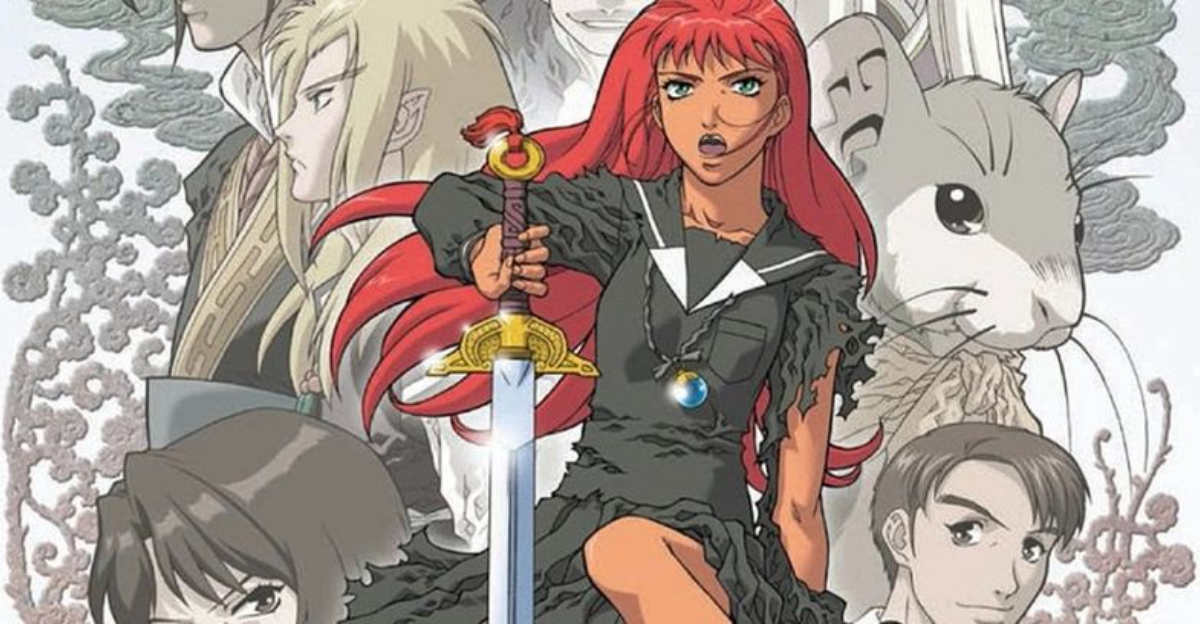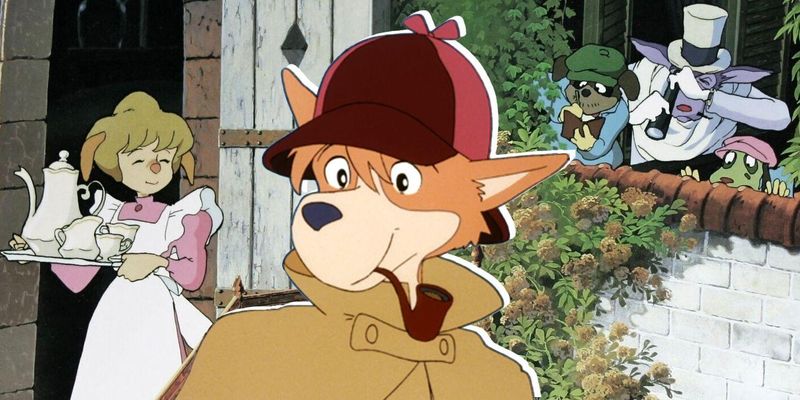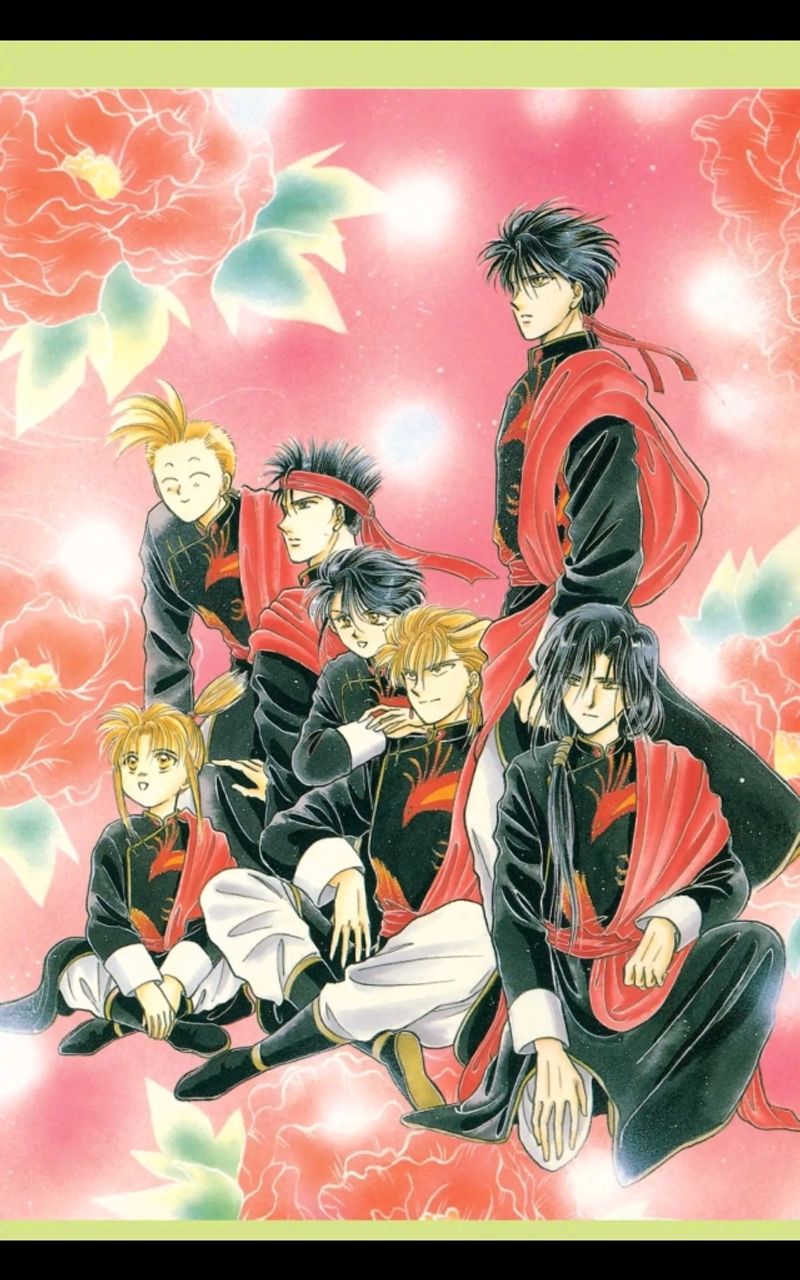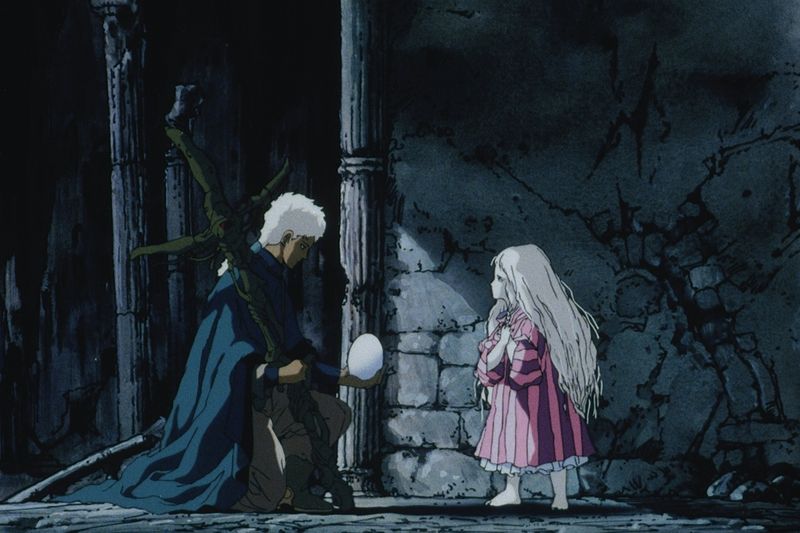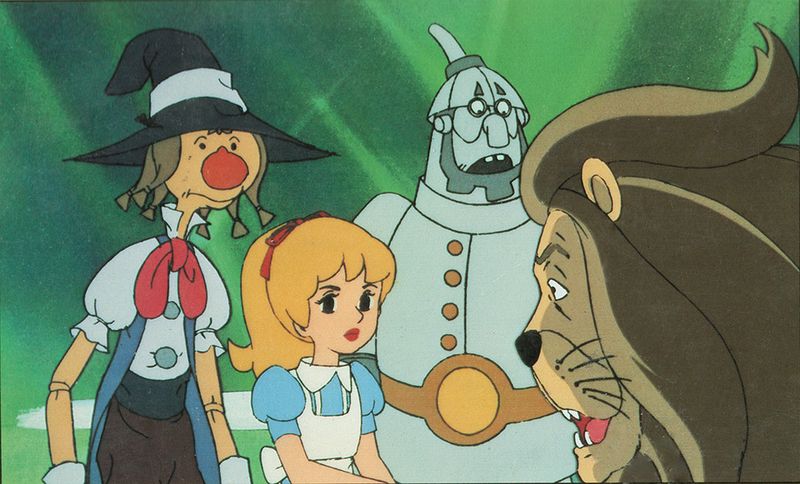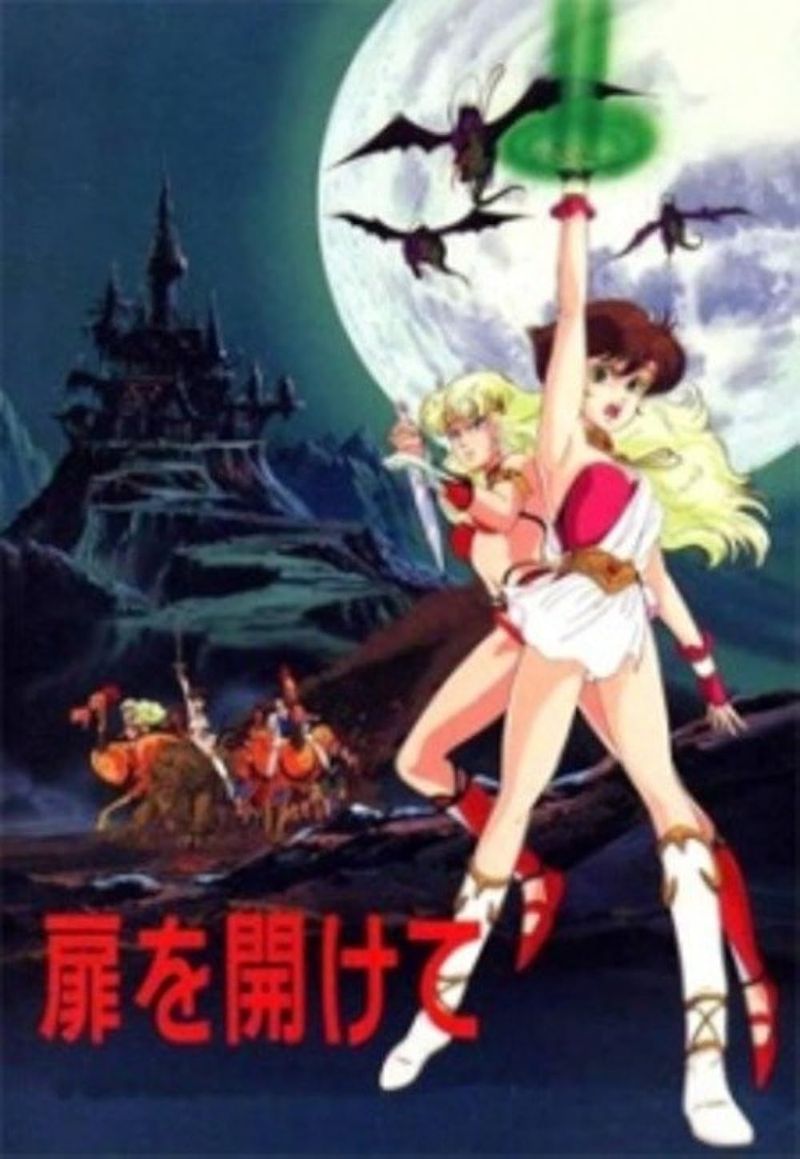The 1980s marked the birth of the isekai genre in anime, where characters are transported to parallel worlds or fantasy realms. While today’s fans might think of isekai as a modern phenomenon, these groundbreaking 80s shows laid the foundation for what would become one of anime’s most popular genres. These pioneering series introduced the tropes, visual styles, and storytelling approaches that modern hits like Sword Art Online and Re:Zero would later perfect.
1. Aura Battler Dunbine (1983)
Considered the grandfather of modern isekai, this mecha masterpiece changed anime forever. Motorcycle racer Show Zama finds himself mysteriously transported to the mystical world of Byston Well, where he’s forced to pilot insectoid mechs called Aura Battlers.
Directed by Gundam creator Yoshiyuki Tomino, Dunbine established the core isekai template that countless series would follow. Its unique blend of medieval fantasy with high-tech mecha combat created a visual language all its own.
Fun fact: Dunbine was revolutionary for featuring a protagonist who wasn’t initially special or chosen—just an ordinary person thrust into extraordinary circumstances.
2. The Mysterious Cities of Gold (1982-1983)
Adventure awaits in this Franco-Japanese treasure that captivated children worldwide. Young Esteban, a Spanish orphan with mysterious powers, embarks on a journey to the New World in search of the legendary Cities of Gold, accompanied by his friends Zia and Tao.
Though not a traditional isekai by modern definitions, the series captures the essence of being strangers in a foreign land. The blend of historical settings with fantastical elements created an immersive experience unlike anything else at the time.
The show’s educational segments about Incan and Aztec civilizations made it both entertaining and informative for young viewers.
3. Leda: The Fantastic Adventure of Yohko (1985)
Music meets magic in this groundbreaking OVA featuring one of anime’s first female isekai protagonists. High schooler Yohko Asagiri gets pulled into a fantasy dimension while composing a love song, only to discover her music cassette grants her magical powers in this strange new realm.
Released as a one-shot film, Leda pioneered the concept of music as a power source long before franchises like Macross made it popular. The vibrant art style and dreamlike sequences reflected the experimental animation techniques emerging in the 80s.
The film’s unique aesthetic influenced countless magical girl series that followed.
4. Mashin Hero Wataru (1988)
Robots meet folklore in this delightful series that captured children’s imaginations. Nine-year-old Wataru Ikusabe stumbles upon a mystical tower that transports him to Soukaizan, a fantasy version of Japan filled with yokai monsters and magical creatures.
Armed with his trusty mecha Ryujinmaru, Wataru must battle through the tower’s seven levels to save both worlds. The series brilliantly merged Japanese mythology with robot action, creating a perfect gateway anime for young viewers.
Mashin Hero Wataru established the template for kid-friendly isekai adventures that would later influence series like Digimon and Monster Rancher.
5. Warrior from Another World (1979 Novel, 1980s Influence)
Before it shaped 80s anime, Haruka Takachiho’s 1979 novel laid the foundation for the entire isekai genre. The story follows a modern Japanese man summoned to a fantasy world to defeat a demon king—sound familiar?
While not animated until much later, this influential work directly inspired numerous 80s productions. Its revolutionary “ordinary person transported to fantasy world” premise created the blueprint that nearly all modern isekai stories follow today.
The novel’s impact can’t be overstated; without it, we might never have gotten classics like The Twelve Kingdoms or modern hits like KonoSuba.
6. Super Dimension Fortress Macross (1982)
Culture shock takes on galactic proportions in this space opera classic. When an alien spaceship crashes on Earth, humanity rebuilds it and launches into space, only to be caught in an interstellar war with the giant Zentradi aliens.
While primarily known as a mecha series, Macross contains strong isekai elements as humans find themselves displaced among the stars. The fish-out-of-water experience of pilot Hikaru Ichijo mirrors the classic isekai protagonist journey.
Most remarkably, Macross proposed that human culture—specifically J-pop music—could bridge seemingly insurmountable differences between civilizations, a theme that would resonate through anime for decades.
7. Sherlock Hound (1984)
Elementary, my dear viewers! This steampunk reimagining of Sherlock Holmes comes from the legendary mind of Hayao Miyazaki. Set in an alternate Victorian London populated by anthropomorphic dogs, the series follows the brilliant detective Sherlock Hound as he solves mysteries and battles his nemesis Professor Moriarty.
Though not a traditional isekai, its alternate world setting and dimension-hopping adventures qualify it as an early genre experiment. The show’s gorgeous animation and whimsical mechanical designs showcase Miyazaki’s genius years before Studio Ghibli became a household name.
Each episode features incredible steampunk contraptions that would make even modern anime blush with envy.
8. Fushigi Yuugi (Manga, 1989)
Books come alive in this revolutionary shojo series that would define a generation. Though the anime adaptation wouldn’t arrive until 1995, Yuu Watase’s manga debuted in 1989, introducing readers to Miaka Yuki, a normal high school girl who gets sucked into an ancient Chinese book called “The Universe of the Four Gods.”
Fushigi Yuugi broke new ground by combining isekai elements with romance, creating a template for countless female-oriented fantasy series. The concept of being transported into a book world would later influence everything from Inuyasha to modern hits like Ascendance of a Bookworm.
The series was revolutionary for centering a female protagonist in what had been a predominantly male-oriented genre.
9. Gunbuster (1988)
Time becomes the ultimate frontier in Hideaki Anno’s directorial debut. High school girl Noriko Takaya trains to pilot a massive mecha called Gunbuster to fight space monsters, but each mission subjects her to relativistic time dilation—minutes for her mean years pass on Earth.
This unique take on displacement creates an emotional isekai experience unlike any other. While fighting aliens, Noriko experiences the heartbreak of returning to an Earth where everyone she knew has aged decades or died.
Gunbuster pioneered the psychological depth that would later define Anno’s masterpiece Neon Genesis Evangelion, proving that sci-fi isekai could explore profound human experiences.
10. Angel’s Egg (1985)
Haunting symbolism permeates this experimental film that defies easy categorization. A mysterious girl protects a large egg while wandering through an abandoned, dreamlike world filled with empty buildings and fossil-like structures.
Director Mamoru Oshii created what might be called an “art-house isekai,” where the otherworldly setting serves as a canvas for philosophical exploration. The film’s striking visuals—influenced by European artists like Giorgio de Chirico—established a new visual language for depicting alternate realities in anime.
Though rarely discussed in mainstream isekai conversations, Angel’s Egg’s surreal atmosphere influenced countless fantasy worlds that followed.
11. Magic Knight Rayearth (Manga, 1989)
Three worlds collide in CLAMP’s groundbreaking fantasy series that began as a manga in 1989. Tokyo schoolgirls Hikaru, Umi, and Fuu are summoned to the magical world of Cephiro during a field trip to Tokyo Tower, destined to become the legendary Magic Knights.
What makes Rayearth revolutionary is its genre-blending approach. The series seamlessly combines magical girl tropes with mecha action and RPG-like progression—elements that would later define series like Sword Art Online.
CLAMP’s distinctive art style and the series’ unexpected plot twists challenged readers’ expectations of what an isekai story could be.
12. The Wizard of Oz (1982 Anime Film)
Yellow brick roads lead to anime innovation in this Japanese adaptation of L. Frank Baum’s classic tale. Produced by Toho Animation, this version follows Dorothy’s journey from Kansas to the magical land of Oz with faithful companions Scarecrow, Tin Man, and Cowardly Lion.
Technically predating Dunbine as an isekai adaptation, this film demonstrated how Western portal fantasies could be reimagined through Japanese animation sensibilities. The distinctive character designs and vibrant color palette showed early hints of the anime aesthetic that would later dominate the genre.
This adaptation proved that isekai concepts transcended cultural boundaries, setting the stage for future cross-cultural fantasy works.
13. Open the Door (1986 Film)
Psychic powers unlock parallel worlds in this forgotten gem of 80s anime. A group of ESP-wielding teenagers discovers a portal to an alternate dimension, where their abilities manifest in dramatically different ways.
As one of the first anime to blend psychic abilities with portal fantasy, Open the Door anticipated later series like El Hazard. The film’s limited release and obscure status have made it something of a holy grail for vintage isekai collectors.
Despite its relative obscurity, the film’s unique approach to parallel worlds influenced numerous creators, with echoes of its concepts appearing in later works like The Twelve Kingdoms and even Stranger Things.
